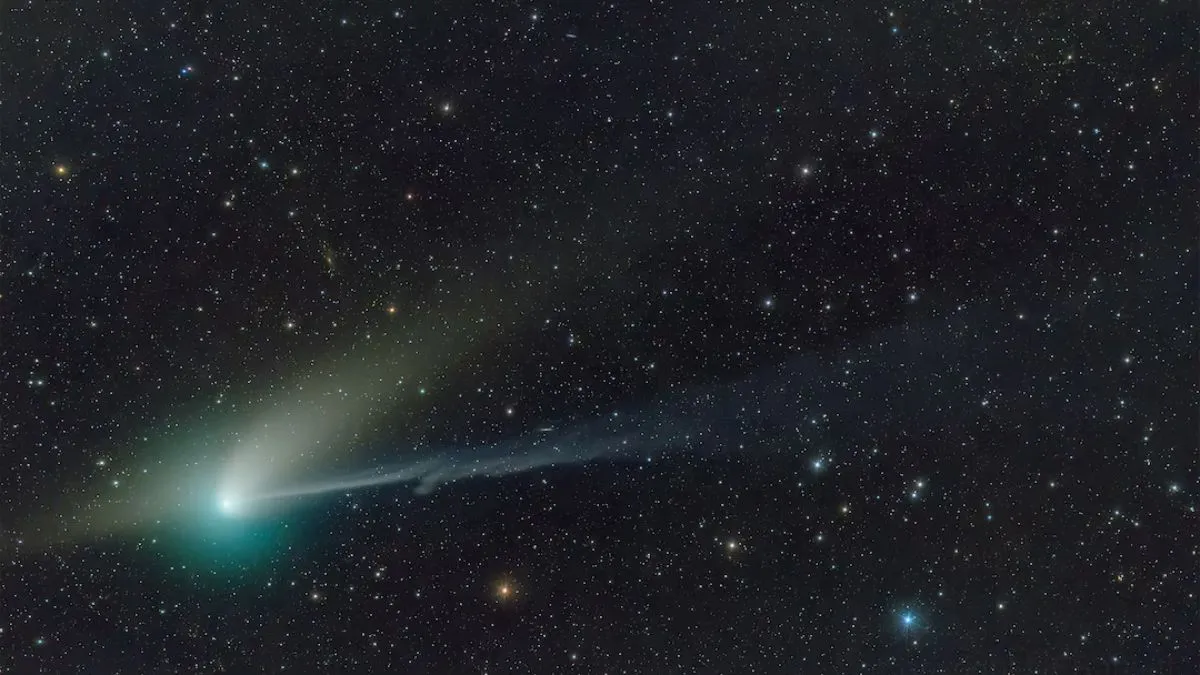- By Ajeet Kumar
- Fri, 17 Oct 2025 02:18 PM (IST)
- Source:JND
Green Comet: Two bright green comets are streaming through the skies and are visible to skygazers in the Northern Hemisphere. Both hail from the outer edges of our solar system — possibly what’s known as the Oort Cloud, well beyond Pluto.
Comet Lemmon will have its closest brush with Earth on or around Tuesday. The other cosmic snowball, Comet SWAN, should have its flyby with Earth on Monday, but it’s headed away from the sun and will likely grow dimmer as the days pass.
What is Green Comet?
Nicknamed "dirty snowballs" by astronomers, comets are balls of ice, dust and rocks that typically hail from the ring of icy material called the Oort cloud at our solar system's outer edge. One known comet actually originated outside the solar system - 2I/Borisov.
Why is the comet green?
The green comet, whose formal name is C/2022 E3 (ZTF), was discovered on March 2, 2022, by astronomers using the Zwicky Transient Facility telescope at Caltech's Palomar Observatory in San Diego. Its greenish, emerald hue reflects the comet's chemical composition - it is the result of a clash between sunlight and carbon-based molecules in the comet's coma.
Rare phenomenon
Spotting two comets simultaneously without special equipment is “rare, but not unprecedented,” said Carson Fuls, director of the University of Arizona-based sky survey that spotted Comet Lemmon.
ALSO READ: Did You Know Satellites Can Be Hijacked And Turned Into Space Weapons?
To see the pair, go outside just after sunset and look to the northern sky for Comet Lemmon close to the horizon. Comet SWAN will also be near the horizon, but to the southwest.
The double comets could be visible with binoculars through the end of the month, but experts aren’t yet sure how bright they’ll remain, said astronomer Valerie Rapson of the State University of New York at Oneonta.
Comets are frozen leftovers from the solar system’s formation billions of years ago. They heat up as they swing toward the sun, releasing their characteristic streaming tails.
ALSO READ: Space-Based Sensors Detect Anomalies, Revealing Surprising Behavior In Earth's Core
Comet Lemmon, also designated C/2025 A6, was discovered in January by a telescope scouring the night sky for near-Earth asteroids. Comet SWAN, also known as C/2025 R2, was spotted in September by an amateur astronomer using photos from a spacecraft operated by NASA and the European Space Agency.
The comets are green because of gases streaming off their surfaces. From Earth, they’ll look like gray, fuzzy patches.
Earlier this year, a green comet broke up as it swung by the sun, dashing hopes of a naked-eye spectacle. A bright comet called Tsuchinshan-Atlas zoomed by Earth in 2024, and other notable flybys included Neowise in 2020 and Hale-Bopp and Hyakutake in the 1990s.

